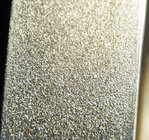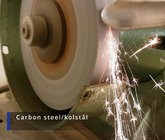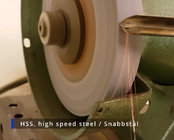We have recently helped a club member disperse his shop tools and the new owner of a couple of Sorby scrapers asked me how to determine if they're high speed steel. He doesn't want to sharpen them on his CBN wheels if they're carbon steel. My metallurgy knowledge is limited to "if you can file it, it's annealed".
The tools are a little darker than current HSS, and say "Sheffield Steel" on them, rather than the "HSS" that is typically found today. The prior owner had been turning for 10 years or so, but I suppose he could have acquired these used from someone and they could be older than that.
Thanks in advance for your expertise.
The tools are a little darker than current HSS, and say "Sheffield Steel" on them, rather than the "HSS" that is typically found today. The prior owner had been turning for 10 years or so, but I suppose he could have acquired these used from someone and they could be older than that.
Thanks in advance for your expertise.



